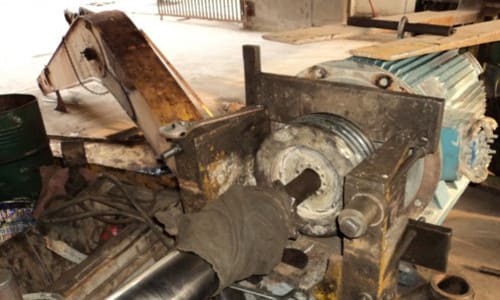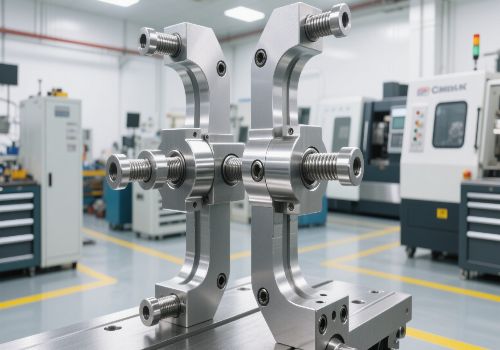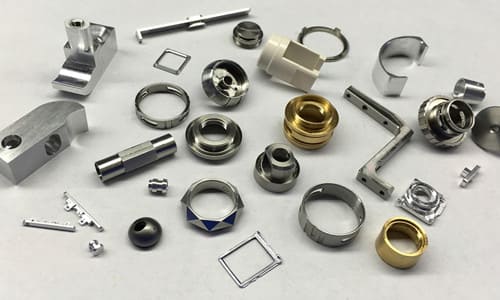During the machining process, due to various reasons such as workpiece material, environment, processing method, etc., mechanical wear will be caused. Mechanical wear is very harmful to product quality, accuracy and processing efficiency. Therefore, it is very important to prevent mechanical processing wear.
1. Common types and characteristics of mechanical wear
A. Running-in wear: The corresponding wear of the machine under normal load, speed, and lubrication conditions. This wear develops very slowly.
B. Hard particle wear: Abrasive particles falling from the part itself and hard particles entering from the outside, causing mechanical cutting or grinding, and destroying the part.
C. Surface fatigue wear: under the action of alternating loads, small cracks and pit-like pits are generated, which damage the parts. This type of wear is related to pressure, load characteristics, machine material, and size factors.
D. Thermal wear: during the friction process of the parts, the metal surface is worn and the internal matrix generates hot zones or high temperatures, causing the parts to have tempering softening, burning and wrinkles, which often occur in high-speed and high-pressure sliding friction. The destructiveness is more prominent, and accompanied by the nature of accident wear.
E. Corrosionwear: chemical corrosion causes wear, and the surface of parts is corroded by acid, alkali, salt liquid or harmful gas, or the surface of parts is combined with oxygen to form hard and brittle metal oxides that are easy to fall off, which makes the parts wear.
F. Phase change wear: When the parts work under high temperature for a long time, the surface metal structure of the parts becomes larger, and the grain boundaries are oxidized to produce small gaps, which make the parts fragile, reduce the wear resistance, and accelerate the wear of the parts.
G. Hydrodynamic wear: the wear on the surface of the part caused by the impact of liquid velocity or particle flow rate on the surface of the part.
2. Causes of parts wear and prevention methods
A. Normal wear
a. Mutual friction between parts: to ensure clean and lubricated parts
b. Wear caused by hard particles: keep the parts clean and cover the exposed parts of the parts
c. Fatigue wear of parts caused by long-term alternating load: Eliminate gaps, choose suitable lubricating grease, reduce extra vibration, and improve parts accuracy.
d. Corrosionby chemical substances: remove harmful chemical substances and improve the corrosion resistance of parts
e. Changes in the surface metallographic structure or matching properties of parts under high temperature conditions: try to improve working conditions, or use high temperature resistant and wear resistant materials to make parts.
B. Abnormal wear
a. Repair or manufacturing quality does not meet the design requirements: strict quality inspection.
b. Violation of operating procedures: familiarize yourself with mechanical properties and operate carefully.
c. Improper transportation, loading and unloading, and storage: master hoisting knowledge and operate with caution.
3. Reasons and measures for shortened mechanical life after overhaul
A. Deformation of basic parts: Due to the deformation, the relative position of the parts is changed, which accelerates the wear of the parts and shortens the life of the parts.
Reasonable installation and adjustment can be adopted to prevent deformation.
B. Parts balance failure: parts that rotate at a high speed are unbalanced, which accelerates the damage of the parts under the action of centrifugal force and shortens the life of the parts.
Adopt strict dynamic balance test measures to prevent.
C. Running-in is not performed: The mating surface of the replaced part is not properly running-in. As time increases, the amount of wear on the mating surface of the part will increase and the life of the part will be shortened.
The preventive measure is to run-in the replaced part.
D. Low hardness: improper selection of materials for repaired parts, insufficient surface hardness, or unqualified heat treatment.
Preventive measures: select materials as required and conduct reasonable heat treatment.
As a professional CNC machining manufacturer, DO Machining not only produce metal parts, but plastic and wood parts are also available.
Please visit our CAPABILITIES and what PRODUCTS we did.
CNC machining service is the core business of DO Machining, from protptyes to bulk production, our professional 3/4/5 aixs CNC machining centers, CNC turning equipments, CNC turning-milling equipments, CNC grinding machines etc., are operated by well trained manufacturing engineers to meet the demands from global 1000+ customers in 30+ industries.
CNC Machining can be done starting with blanks produced from standard bar stock or one of DO Machining other manufacturing processes.
Contact us to see how we can provide overall value to your CNC machining needs.











